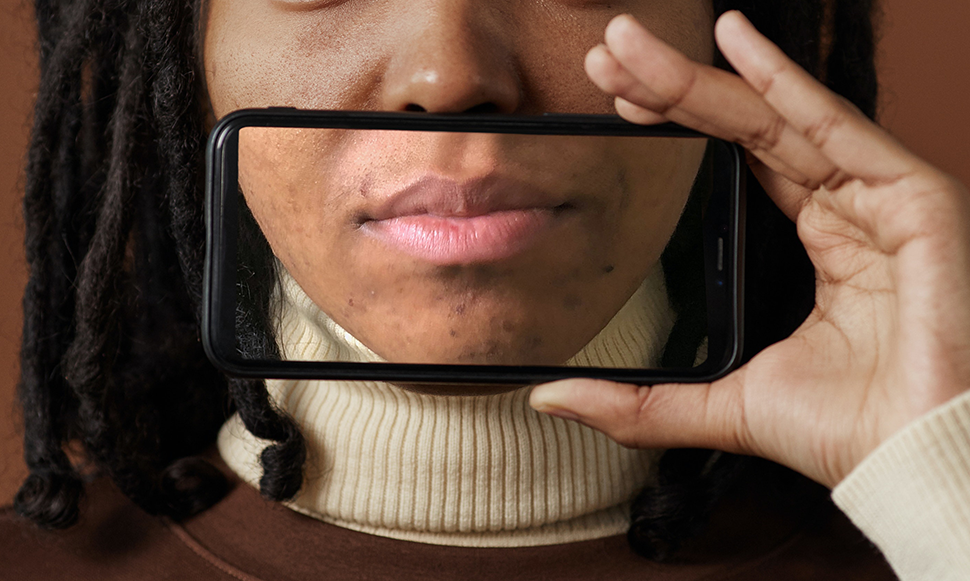Manifestaciones orales en pacientes con COVID 19
DOI:
https://doi.org/10.31644/IMASD.29.2022.a09Palabras clave:
Manifestaciones orales, COVID 19, SARS-CoV-2Resumen
El 2019-nCoV se llama oficialmente SARS-CoV-2 y causa la enfermedad llamada COVID 19, la cual es considerada pandemia por la Organización Mundial de la Salud (OMS). La COVID 19 es una infección que produce un síndrome respiratorio agudo severo que se ha caracterizado por fiebre, síntomas respiratorios y gastrointestinales, así como otras manifestaciones sistémicas. En este contexto, se han ido reportando manifestaciones clínicas en pacientes con SARS-CoV-2 positivos que han ido enriqueciendo el conocimiento sobre las características del cuadro clínico, sin embargo, uno de los aspectos escasamente documentados es la semiología a nivel de la cavidad oral. Nuevas evidencias muestran la relevancia de la cavidad oral como un reservorio del virus por lo que desempeña un papel fundamental en el diagnóstico, evolución y transmisión epidemiológica de los patrones de infección del COVID-19. El objetivo del presente es realizar una revisión y análisis de las evidencias disponibles en referencia a las manifestaciones orales en el contexto de la infección de SARS-CoV-2.
Descargas
Citas
Abduljalil, J.M., Abduljalil, B.M. (2020). Epidemiology, genome, and clinical features of the pandemic SARS-CoV-2: a recent view. New Microbes and New Infections, 35:1-8.
Aghazadeh, N., Homayouni, M., Sartori-Valinotti, J.C. (2020). Oral vesicles and acral erythema: report of a cutaneous manifestation of COVID-19. Int J Dermatol ,59(9):1153-1154.
Amorim Dos Santos, J., Normando, A., Carvalho da Silva, R. L., De Paula, R. M., Cembranel, A. C., Santos-Silva, A. R., & Guerra, E. (2020). Oral mucosal lesions in a COVID-19 patient: New signs or secondary manifestations?. Int J of infectious diseases, 97, 326–328.
Amorim dos Santos, J., Normando, A., Carvalho da Silva, R.L., Acevedo, A.C., De Luca Canto, G., Sugaya, N., Santos-Silva, A.R., Guerra E. (2021). Oral Manifestations in Patients with COVID-19: A Living Systematic Review. J Dental Res, 100(2): 141–154.
Andersen, K.G., Rambaut, A., Lipkin, W.I., Holmes, E.C., Garry, R.F. (2020). The proximal origin of SARS-CoV-2. Nat Med,1-3.
Bénézit, F., Le Turnier, P., Declerck, C., Paillé, C., Revest, M., Dubée, V., RAN COVID Study Group. (2020). Utility of hyposmia and hypogeusiafor the diagnosis of COVID-19. The Lancet Infectious Diseases, S1473-3099(20), 30297–30298.
Biadsee, A., Biadsee, A., Kassem, F., Dagan, O., Masarwa, S., Ormianer, Z. (2020). Olfactory and Oral Manifestations of COVID-19: Sex-Related Symptoms—A Potential Pathway to Early Diagnosis Otolaryngol Head Neck Surg., 163(4): 722–728.
Brandáo, T.B., Gueiros, L.A., Melo, T.S., et al. (2021). Oral lesions in patients with SARS-CoV-2 infection: could the oral cavity be a target organ? Oral Surg Oral Med Oral Pathol Oral Radiol.., 131(2):e45-e51.
Capocasale, G., Nocini, R., Faccioni, P., Donadello, D., Bertossi, D., Albanese, M., & Zotti, F. (2021). How to deal with coronavirus disease 2019: A comprehensive narrative review about oral involvement of the disease. Clin Experimental Dental Res, 7(1), 101–108.
Cardoso, F.T., Lima, M.J., Cavlcante, C.M., Buzzati, P.L., Perez, O.S. (2020). COVID-19 e a Cavidade Bucal: Interações, Manifestações Clínicas e Prevenção. ULAKES J Med 1 (EE) 98-105.
Carreras, P.M., -Presas, C., Amaro Sánchez, J., López-Sánchez, A. F., Jané-Salas, E., Somacarrera Pérez, M. L. (2020). Oral vesiculobullous lesions associated with SARS-CoV-2 infection. Oral diseases, 27(53):710-712.
Cebeci, K.F., Çaşkurlu, H. (2019). Mucosal involvement in a COVID-19-positive patient: A case report. Dermatol Ther., 4(6):E272-7.
Chakraborty, S. (2020). Metagenome of SARS-Cov2 patients. OSF Preprints. https://osf.io/jegwq/
Chaux-Bodard, A.G., Deneuve, S., Desoutter, A. (2020). Oral manifestation of Covid-19 as an inaugural symptom? J Oral Med Oral Surg., 2020;26(2):18.
Chan, J.F., Yuan, S., Kok, K.H., To, K.K., Chu, H., Yang, J., Xing, F., Liu, J., Yip, C.C., Poon, R.W., Tsoi, H.W., Lo, S.K., Chan, K.H., Poon, V.K., Chan, W.M., Ip, J.D., Cai, J.P., Cheng, V.C., Chen, H., Hui, C.K., Yuen, K.Y. (2020). A familial cluster of pneumonia associated with the 2019 novel coronavirus indicating person-to-person transmission: a study of a family cluster. Lancet., 15; 395(10223):514-523.
Chen, L., Zhao, J., Peng, J., Li, X., Deng, X., Geng, Z., et al. (2020). Detection of 2019-nCoV in Saliva and Characterization of Oral Symptoms in COVID-19 Cell Prolif.., 53(12): e12923.
Chen, X., Tian, J., Li, G., (2020). Initiation of a new infection control system for the COVID-19 outbreak. Lancet Infect Dis., 20(4):397-398.
Chen, N., Zhou, M., Dong, X., Qu, J., Gong, F., Han, Y., et al. (2020). Epidemiological and clinical characteristics of 99 cases of 2019 novel coronavirus pneumonia in Wuhan, China: a descriptive study. Lancet, 395: 507-13.
Corchuelo, J., Ulloa, F.C. (2020). Oral manifestations in a patient with a history of asymptomatic COVID-19. Case Report Int J Infect Dis.,100:154-157.
Cruz, T.R.O., Peraza, L.A.J., Guimaraes, D.M., Matos, V.L.H. (2020). Oral mucosal lesions in patients with SARS-CoV-2 infection. Report of four cases. Are they a true sign of COVID-19 disease? Spec Care Dentist., 40(6):555-60.
Dos Santos, J.A., Normando, A.G., da Silva, R.L., et al. (2020). Oral mucosal lesions in a COVID-19 patient: new signs or secondary manifestations? Int J Infect Dis., 9.
Díaz, R.M., Jimenez, R. A., Villarroel M. (2020). Oral manifestations associated with COVID-19. Oral Dis. Advance online publication. https://doi.org/10.1111/odi.13555.
Falcón, G.B., Falcón, P.G. (2021). Repercusiones en la Cavidad Oral Causadas por la Infección con COVID-19. Int. J. Odontostomat.,15(1):23-26.
Farook, F. F., Mohamed Nuzaim, M. N., Taha Ababneh, K., Alshammari, A., & Alkadi, L. (2020). COVID-19 Pandemic: Oral Health Challenges and Recommendations. European J Dent., 14(S 01), S165–S170.
Fernandes M.B., Dolhnikoff, M., et al,. (2020). Periodontal tissues are targets for Sars-Cov-2: a post-mortem study. J Oral Microbiol., 13(1):1848135.
Gaitán, L., Leyva, E., Cruz, R., Carmona, D., Ruiz, Rodríguez, M., Arenas, A. (2019). COVID-19 y el cirujano dentista. Rev Odont Mex., 23(4):207-2015.
Gorbalenya, A.E., Baker, S.C., Baric, R.S., Groot, R.J., Drosten, C., Gulyaeva, A.A., et al. (2020). Severe acute respiratory syndrome-related coronavirus: The species and its viruses –a statement of the Coronavirus Study Group.bioRxiv. 2020. Nature Microbiology., 5(3):536-544.
Gralinski, L.E., Menachery, V.D. (2020). Return of the Coronavirus: 2019-nCoV. Viruses 12 (2): 135. https://doi.org/10.3390/v12020135.
Gutiérrez, F., Zambrano, R. (2020). Implicaciones bucales por COVID-19. Revisión de tema. Odontol. Sanmarquina, 23(4): 419-424.
Herrera, D., Serrano J., Roldán S., Sanz M. (2020). Is the oral cavity relevant in SARS-CoV-2 pandemic? Clin Oral Invest., 24:2925-2930.
Hjelmesæth, J., Skaare, D. (2020). Loss of smell or taste as the onlysymptom of COVID-19. J Norwegian Med Associat.,140(7).
Huang, C., Wang, Y., Li, X., Ren, L., Zhao, J., Hu, Y., et al. (2020). Clinical features of patients infected with 2019 novel coronavirus in Wuhan, China. Lancet., 395:497-506.
Hui, D. S., Azhar, E. I., Memish, Z. A., Zumla, A. (2020). Human Coronavirus Infections—Severe Acute Respiratory Syndrome (SARS), Middle East Respiratory Syndrome (MERS), and SARS-CoV-2. Reference Module in Biomedical Sciences, B978-0-12-801238-3.11634-4. https://doi.org/10.1016/B978-0-12-801238-3.11634-4.
Indu, S. (2020). Multiple oral ulcerations–an initial manifestation of COVID 19 infection: a personal experience. J Oral Maxillofac Pathol., 24 (2):227.
Iranmanesh, B., Khalili, M., Amiri, R., Zartab, H., & Aflatoonian, M. (2021). Oral manifestations of COVID-19 disease: A review article. Dermatol Therapy., 34(1), e14578.
Jang, Y., Son, H. J., Lee, S., Lee, E. J., Kim, T. H., Park, S. Y. (2020). Olfatory and taste disorder: The first and only sign in a patient with SARS-CoV-2 pneumonia. Infec Control and Hospital Epidemiol., 41,1103.
Jimenez, C.J., Ortega, Q.D., de Perosanz, L.D., et al. (2020). Enanthem in patients with COVID-19 and skin rash. JAMA Dermatol. 2020;156(10):1134-6.
Jimenez, C. J., Ortega, Q. D., Carretero, B, I., Suarez, V. A., Saceda, C. D., Moreno, G.C., Fernandez, N D. (2020). Erythema multiforme‐like eruption in patients with COVID‐19 infection: Clinical and histological findings. Clin Experimental Dermatol., 45, 892–895.
Kämmerer, T., Walch, J., Flaig, M., French, L.E. (2020). COVID-19 associated herpetic gingivostomatitis. Clin Exp Dermatol.,46(1):174-176.
Labé, P., Ly, A., Sin, C., et al. (2020). Erythema multiforme and Kawasaki disease associated with COVID-19 infection in children. J Eur Acad Dermatol Venereol., 34(10):e539-e541.
Lechien, J.R., Chiesa-Estomba, C.M., De Siati, D.R., et al. (2020). Olfactory and gustatory dysfunctions as a clinical presentation of mild-to-moderate forms of coronavirus diseases (COVID-19): a multi-center European study. Eur Arch Otorhinolaryngol., 277(8), 2251–2261.
Lu, H., Stratton, C.W., Tang, Y.W. (2020). Outbreak of pneumonia of unknown etiology in Wuhan, China: The mystery and the miracle. J Med Virol.,92(4):401-402.
Malih, N., Hajinasrollah, G., Zare, M., Taheri, M. (2020). Unexpected presentation of COVID-19 in a 38-year-old male patient: a case report. Case Rep Dermatol. 2020;12(2):124-131.
Mao, L., Jin, H., Wang, M., Hu, Y., Chen, S., He, Q. Hu, B. (2020). Neurologic manifestations of hospitalized patients with coronavirus disease 2019 in Wuhan, China. JAMA Neurology, 77, 683–690.
Mousavizadeh, L., Ghasemi, S. (2020). Genotype and phenotype of COVID-19: Their roles in pathogenesis. J. Microbiol. Immunol. Infect, 54(2):159-163.
Nemeth, M., Matus, C., Carrasco, R. (2020). Manifestaciones Orales de la Infección por COVID-19. Int J Odontostomat.., 14(4): 555-560.
Nuno, G.A., Carrillo, M.P., Magaletsky, M.K., Ríos, C.M., et al. (2021). Prevalence of mucocutaneous manifestations in 666 patients with COVID-19 in a field hospitalin Spain: oral and palmoplantar findings. British J Dermatol., 184(1): 184–185.
Patel, J., Woolley, J. (2021). Necrotizing periodontal disease: oral manifestation of COVID-19. Oral Dis., 27 Suppl 3:768-769.
Rivera, F.E.I., Santos, R., Simpson, S., Garg, P. (2020). Incomplete Kawasaki disease in a child with Covid‐19. Indian Pediatrics, 57, 680–681.
Sifuentes, R.E., Palacios, R.D. (2020). COVID-19: The outbreak caused by a new coronavirus. Bol Med Hosp Infant Mex., 77(2), 47-53.
Soares, C.D., de Carvalho, R.A., de Carvalho, K.A., de Carvalho, M.G., de Almeida, O.P. (2020). Letter to editor: oral lesions in a patient with Covid-19. Med Oral Patol Oral Cir Bucal., 25(4):e563.
Struyf, T., Deeks, J.J., Dinnes, J., Takwoingi, Y., Davenport, C., Leeflang, M.M.G., Spijker, R., Hooft, L., Emperador, D., Dittrich, S., Domen , J., Horn, S.R., Van den Bruel, A. (2020). Signs and symptoms to determine if a patient presenting in primary care or hospital outpatient settings has COVID‐19 disease. Cochrane Database of Systematic Reviews Issue 7. doi: 10.1002/14651858.CD013665. Accessed 12 March 2021.
Tomo, S., Miyahara, G.I., Simonato, L.E. (2020). Oral mucositis in a SARS-CoV2-infected patient: secondary or truly associated condition? Oral Dis., Letter to the eitor. https://doi.org/10.1111/odi.13570
Tong JY, Wong A, Zhu D, et al. (2020). The prevalence of olfactory and gustatory dysfunction in COVID-19 patients: a systematic review and meta-analysis. Otolaryngol Head Neck Surg., 163:3-11.
Torres, L.J. (2020). ¿Cuál es el origen del SARS-CoV2? Rev Med Inst Mex Seguro Soc., 58(1):1-2.
Verdoni, L., Mazza, A., Gervasoni, A., Martelli, L., Ruggeri, M., Ciuffreda, M., D'Antiga, L. (2020). An outbreak of severe Kawasaki‐like disease at the Italian epicentre of the SARS‐CoV‐2 epidemic: An observational cohort study. Lancet, 395, 1771–1778.
Villanueva, S.F., Escalante, M.L. (2020). SARS-CoV-2 modelo de inoculación en la cavidad oral. Revisión de la literatura. Int. J. Odontostomat. 14(4):495-500, 2020.
Wang. D., Hu, B., Hu, C., Zhu, F., Liu, X., Zhang, J., et al. (2020). Clinical characteristics of 138 hospitalized patients with 2019 novel coronavirus-infected pneumonia in Wuhan, China. JAMA., doi: 10.1001/jama.2020.1585.
Wang, C., Wu, H., Ding, X., Ji, H., Jiao, P., Song, H., Li. S, Dua, H. (2020). Does infection of 2019 novel coronavirus cause acute and/or chronic sialadenitis? Med Hypotheses., 140:109789.
Wu, C., Chen, X., Cai, Y., Xia, J., Zhou, X., Xu, S., Huang, H., Zhang, L., Zhou, X., Du, C., Zhang, Y., Song. J., Wang, S., Chao, Y., Yang, Z., Xu, J., Zhou, X., Chen, D., Xiong, W., Xu, L., Zhou, F., Jiang, J., Bai, C., Zheng, J., Song. Y. (2020). Risk factors associated with acute respiratory distress syndrome and death in patients with coronavirus disease 2019 pneumonia in Wuhan, China. JAMA Intern Med.,180 (7), 934–943.
Wu, Y.C., Chen, C.S., Chan, Y.J. (2020). The outbreak of COVID-19: an overview. J Chin Med Assoc., 83(03):217–220.
Xu, H., Zhong, L., Deng, J., Peng, J., Dan, H., Zeng, X., Li, T., Chen, Q. (2020). High expression of ACE2 receptor of 2019-nCoV on the epithelial cells of oral mucosa. Int J Oral Sci., 12(1):8.
Yan, C.H., Faraji, F., Prajapati, D.P., et al. (2020). Association of chemosensory dysfunction and Covid-19 in patients presenting with Influenza-like symptoms. Int Forum Allergy Rhinol.,10(7):806-813.
Zhou, P., Yang, X.L., Wang, X.G., Hu, B., Zhang, L., Zhang, W., Si, H.R., Zhu, Y., Li, B., Huang, C.L., et al. (2020). A pneumonia outbreak associated with a new coronavirus of probable bat origin. Nature. 579(7798):270–273.
Zhu, N., Zhang, D., Wang, W., et al. (2019). A novel coronavirus from patients with pneumonia in China, 2019. N Engl J Med., 382:727-733.
Zou, X., Chen, K., Zou, J., Han, P., Hao, J., Han, Z. (2020). Single-cell RNA-seq data analysis on the receptor ACE2 expression reveals the potential risk of different human organs vulnerable to 2019-nCoV infection.

Publicado
Versiones
- 01-06-2022 (2)
- 01-02-2022 (1)
Cómo citar
Número
Sección
Licencia
Derechos de autor 2022 Universidad Autónoma de Chiapas

Esta obra está bajo una licencia internacional Creative Commons Atribución 4.0.























